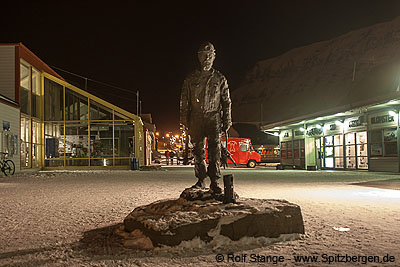-
current
recommendations- Liefdefjord
New page dedicated to one of Spitsbergen's most beautiful fjords. Background information and many photos.
- New Spitsbergen guidebook
The new edition of my Spitsbergen guidebook is out and available now!
- Liefdefjord
New page dedicated to one of Spitsbergen's most beautiful fjords. Background information and many photos.
Page Structure
-
Spitsbergen-News
- Select Month
- May 2025
- April 2025
- March 2025
- February 2025
- January 2025
- December 2024
- November 2024
- October 2024
- September 2024
- August 2024
- July 2024
- June 2024
- May 2024
- April 2024
- March 2024
- February 2024
- January 2024
- December 2023
- November 2023
- October 2023
- September 2023
- August 2023
- July 2023
- June 2023
- May 2023
- April 2023
- March 2023
- February 2023
- January 2023
- December 2022
- November 2022
- October 2022
- September 2022
- August 2022
- July 2022
- June 2022
- May 2022
- April 2022
- March 2022
- February 2022
- January 2022
- December 2021
- November 2021
- October 2021
- September 2021
- August 2021
- July 2021
- June 2021
- May 2021
- April 2021
- March 2021
- February 2021
- January 2021
- December 2020
- November 2020
- October 2020
- September 2020
- August 2020
- July 2020
- June 2020
- May 2020
- April 2020
- March 2020
- February 2020
- January 2020
- December 2019
- November 2019
- October 2019
- September 2019
- August 2019
- July 2019
- June 2019
- May 2019
- April 2019
- March 2019
- February 2019
- January 2019
- December 2018
- November 2018
- October 2018
- September 2018
- August 2018
- July 2018
- June 2018
- May 2018
- April 2018
- March 2018
- February 2018
- January 2018
- December 2017
- November 2017
- October 2017
- September 2017
- August 2017
- July 2017
- June 2017
- May 2017
- April 2017
- March 2017
- February 2017
- January 2017
- December 2016
- November 2016
- October 2016
- September 2016
- August 2016
- July 2016
- June 2016
- May 2016
- April 2016
- March 2016
- February 2016
- January 2016
- December 2015
- November 2015
- October 2015
- September 2015
- August 2015
- July 2015
- June 2015
- May 2015
- April 2015
- March 2015
- February 2015
- January 2015
- December 2014
- November 2014
- October 2014
- September 2014
- August 2014
- July 2014
- June 2014
- May 2014
- April 2014
- March 2014
- February 2014
- January 2014
- December 2013
- November 2013
- October 2013
- September 2013
- August 2013
- July 2013
- June 2013
- May 2013
- April 2013
- March 2013
- February 2013
- January 2013
- December 2012
- November 2012
- October 2012
- September 2012
- August 2012
- July 2012
- June 2012
- May 2012
- April 2012
- March 2012
- February 2012
- January 2012
- December 2011
- November 2011
- October 2011
- September 2011
- August 2011
- May 2011
- April 2011
- March 2011
- February 2011
- January 2011
- December 2010
- November 2010
- September 2010
- August 2010
- July 2010
- June 2010
- May 2010
- April 2010
- March 2010
- February 2010
- November 2009
- October 2009
- August 2009
- July 2009
- June 2009
- May 2009
- April 2009
- March 2009
- February 2009
- January 2009
- December 2008
- November 2008
- October 2008
- August 2008
- July 2008
- June 2008
- May 2008
- April 2008
- March 2008
- February 2008
- April 2000
- Select Month
-
weather information
-
Newsletter

| Guidebook: Spitsbergen-Svalbard |
Home → December, 2012
Monthly Archives: December 2012 − News & Stories
Merry Christmas!
… and a happy new year!
Environmental toxins: new compounds found in Spitsbergen
A group of environmental toxins that is new to the Arctic has recently been traced down in Spitsbergen. The so-called siloxans are part of many cosmetics such as deodorants and others. Siloxans are very volatile, which means they can escape into the air very easily and can then be transported over large distances even to the remotest part of the globe. This in itself is enough reason for concern.
In contrast to known environmental toxins such as PCB’s, siloxans are not quickly absorbed and incorporated in the food chain, but tend to stay longer in the atmosphere. The question if this is good or bad remains to be answered. It may increase the chance of the compounds being broken down naturally, which happens under the influence of sunlight during the summer, before they can do harm to organisms. The concentration of siloxans near 1 nanogram per cubic metre of air seems to be low, but is up to 1000 times higher than for PCB’s, for example, which are known to have negative effects on species such as Polar bears and Glaucous gulls.
The environmental consequence of siloxans still needs to be investigated. Detecting them in the environment is technically difficult, which is one reason why they have been found only recently in air samples from the Arctic. The samples were taken on Zeppelinfjellet near Ny Ålesund, Spitsbergen.
The air chemistry station on Zeppelinfjellet near Ny Ålesund.
Source: Forskning.no
Coal mining in Spitsbergen: deficite in 2012
The Norwegian coal mining in Spitsbergen is expected to yield a deficite in 2012: The mining company Store Norske has announced to be in the red during the ongoing year on a scale that the company has not seen since the opening of the then new mine Svea Nord 12 years ago. Today, the main reason is a several months long production stop in Svea, where only marginal parts of the coal are left: the quality is on the decrease, the proportion of stones within the coal is going up, making a costly grading plant necessary.
When the best parts of the coal seams in Svea Nord where mined around 2003, the company would produce as much as 12,854 tons per year and employee. In 2011, this value was down to 3,922 tons. The low coal prices on the world market contribute to the difficult situation. The company plans to reduce the number of employees from currently 380, but wants to achieve this without dismissals.
In recent years, Store Norske leaders have received critizism for focussing on lawsuits with subcontractors and former director Robert Hermansen, who was then convicted and is currently in prison, but nevertheless enjoys popularity, rather than mining itself. Currently, Store Norske is preparing a new mine at Lunckefjellet, north of Sveagruva, for mining. On the long term, the company aims at new mines in untouched areas, possibly at the mountain Ispallen south of Sveagruva or Operafjellet east of Longyearbyen.
Norwegian coal mining in Spitsbergen: economically currently facing dark times.
Source: Svalbardposten (4912)
SAR capacities in Spitsbergen: 2 large helicopters from 2014
The Norwegian SAR (search and rescue) services in Longyearbyen will have two large Superpuma helicopters at their disposal from 2014. Currently, there is one Superpuma and a smaller helicopter. A Superpuma can carry up to 18 persons.
Until now, these helicopters have been operated by the privately owned company Airlift AS, but in the future the contract will go to another Norwegian company, Lufttransport AS. The Sysselmannen (governor) is accordingly not the owner of the helicopters, but has largely control over their use for official and SAR purposes.
Strengthening the SAR capacities in Longyearbyen will not only benefit locals, scientists, tourists and crews of fishing vessels, but potentially also others in “neighbouring” regions: in recent years, rescue operations from Longyearbyen reached as far as north Greenland and Franz Josef Land.
Superpuma-helocpter in Spitsbergen (here during an exercise).
Source: Sysselmannen
Longyearbyen: power station on fire
Friday (7.12.) at 6.15 a.m., the fire alarm went in Longyearbyen, when a fire broke out in the coal power plant. The plant is taken off the net and electricity is supplied from the reserve plant, while the fire brigade is doing their work.
A complete refurbishment of the coal power plant has been a matter of political debate for some time. The small arctic town is entirely dependent of a reliable supply with both electricity and community heating. A lasting real blackout would soon result in an evacuation of the population.
Amendment: the fire was under control within a few hours. The extent of damage was still unknown at the time of writing.
The coal power plant in Longyearbyen.
Source: Longyearbyen Lokalstyre
News-Listing live generated at 2025/May/03 at 00:05:33 Uhr (GMT+1)

































